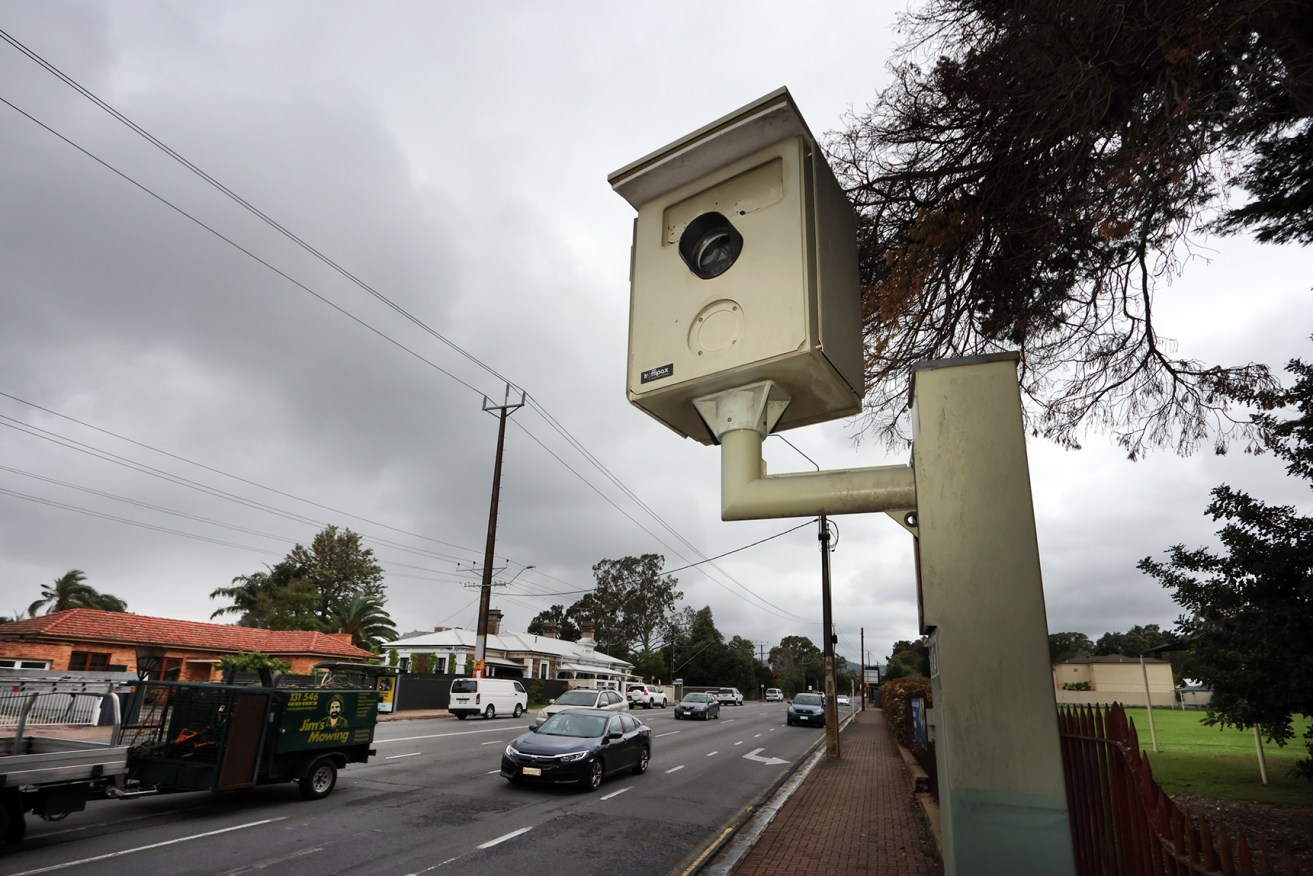20 Adelaide intersections to close by Friday as police test red light cameras
Police will begin to close Adelaide’s “top 20 highest risk” intersections across Adelaide by tomorrow in order to test red light cameras, after a surprise Supreme Court decision led to the suspension of 3000 unpaid red light fines and a legal requirement for cameras at 134 junctions to be tested every 28 days.


Photo: Tony Lewis/InDaily
The court judgement – which ruled SAPOL had failed to test red light cameras in line with regulatory requirements – means police will have to test cameras by driving police cars through red lights while the intersection is closed off to the public.
Prior to the ruling, red light cameras were tested by a computer system and a unit of camera technicians who are not authorised to pass through red lights for testing purposes.
SA Police Commissioner Grant Stevens said the ruling gave police no option but to test the cameras to the letter of the law, which could only be done by police officers authorised to run red lights.
“I’ve given instructions to my team that we’ll be taking the top 20 highest risk camera locations and we’ll be testing them before the end of this week,” Stevens told ABC Radio Adelaide today.
“This is going to be quite resource intensive, obviously it can be very dangerous to put a car through a red traffic light, so we have to control that intersection when we do it.”
The Supreme Court on October 2 overturned a previous decision by the Magistrates Court, which found Adelaide man David Woolmer guilty of turning right on a red arrow at the corner of Magill Road and Portrush Road in 2018.
The lower court ruled it would be impractical for police to get exposures of test vehicles entering intersections on a red light, given the dangers and disruptions associated with red light camera testing.
In the judgement, Supreme Court Justice Greg Parker wrote that the current camera testing system was inadequate, because it did not photograph test vehicles entering the intersection on a red light.
“The problem appears to be that the training does not correctly address the requirements imposed by the regulations,” Justice Parker wrote.
“The timing of exposures is fundamental to proving a charge. If no test is conducted to ensure that exposures or electronic records were taken after a programmed delay, and that one of those exposures or records was taken as the vehicle entered the intersection, the testing has not satisfied the requirements of the regulations.
“Without proof of testing in compliance with the regulations, the prosecution could not prove that the appellant’s vehicle entered the intersection after it commenced showing a red traffic light.”
While the Commissioner did not specify what time intersections would be closed off, he said testing would have to take place during normal police hours.
“We’re still working through those processes … we’re estimating it’s probably 10-15 police officers a day, Monday to Friday doing this,” he said.
“We have to look at the implications in terms of cost, people suggest we do this in the middle of the night, well we can’t have people working constant night shifts doing run through.
“So we’ll be doing it in the least disruptive way possible but in a way that fits in with our normal rostering at the same time.”
Of the 134 intersections across South Australia, seven are in the country and the rest are located across metropolitan Adelaide.
Red light cameras catch around 95 motorists a day across South Australia, but the Supreme Court ruling has suspended all unfinalised fines related to red light offences since the decision was handed down on October 2.
The decision does not impact fines already paid or finalised court convictions, and red light cameras will remain active under the new testing regime with SAPOL continuing to enforce traffic offences while they review the case.
Stevens said SAPOL would be seeking advice on their legal position in response to the ruling.
“As with any sort of determination like this, we seek advice in relation to what our legal position is, so I wouldn’t speculate that we are going to challenge it, but we are getting advice on that,” he said.
Stanley Law, which represented Woolmer in the case, said the ruling showed testing requirements had not been followed on a “systemic level”.
“This is not a one-off judgment. This judgment affects ALL red light camera offences because the problem lies with SAPOL’s misunderstanding of what the testing requirements are,” the statement read.
“Accordingly, camera operators are trained to test cameras in a way that does not comply with the regulations.
“Until there is some change within SAPOL, or this judgment is overturned on appeal, it is hard to see how red light fines can continue to be issued and how current charges can continue to be prosecuted.”
The red light camera located at the intersection of Anzac Highway and Greenhill Road was the costliest for Adelaide motorists in the 2018/19 financial year, with 3814 offences recorded.




